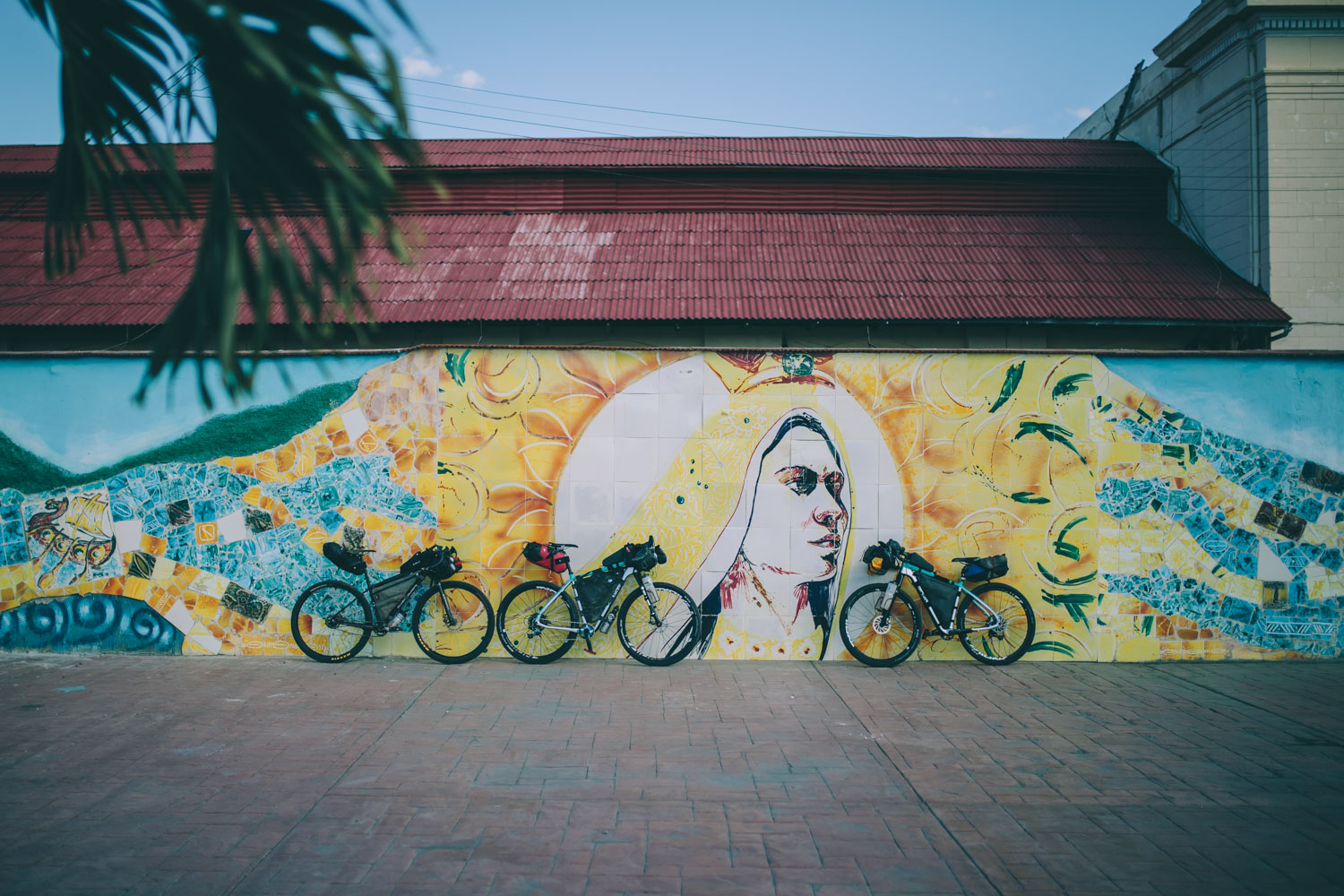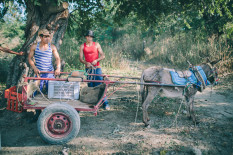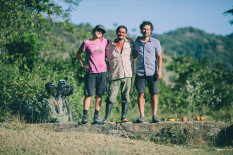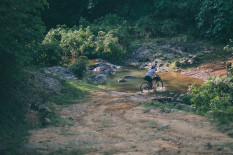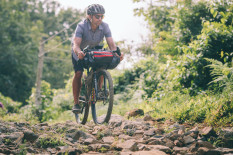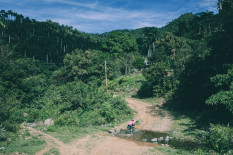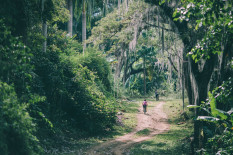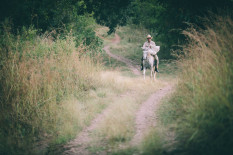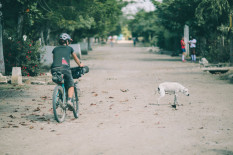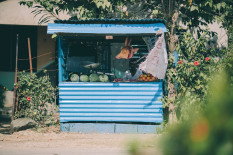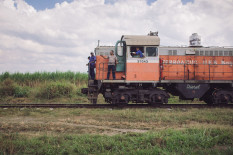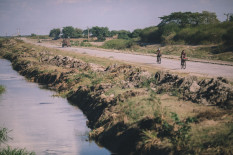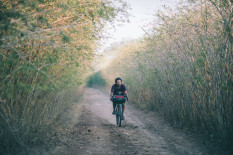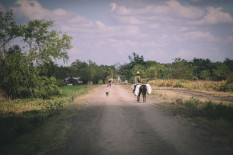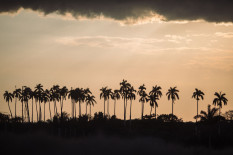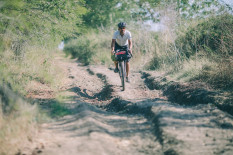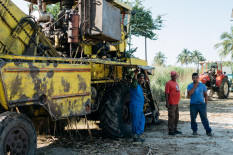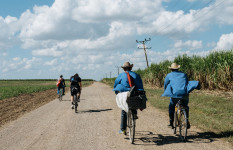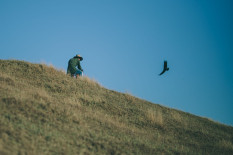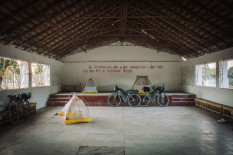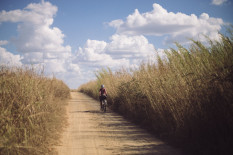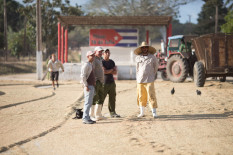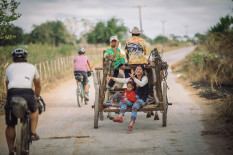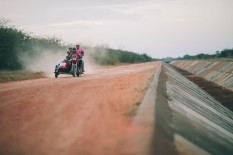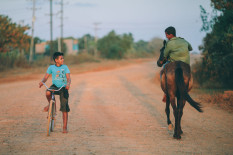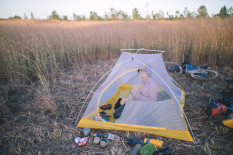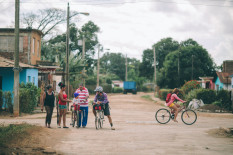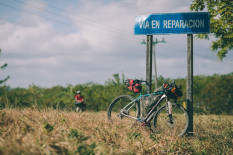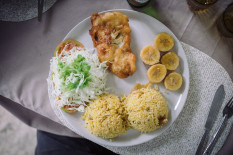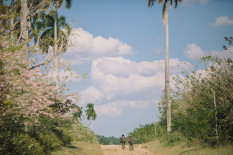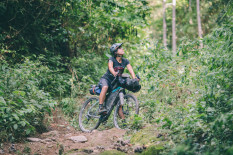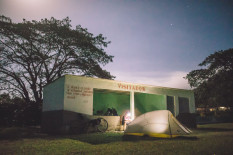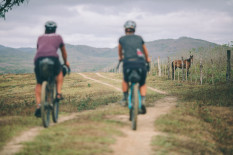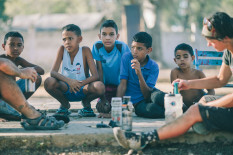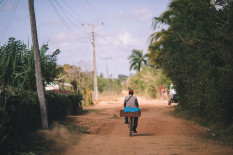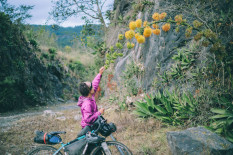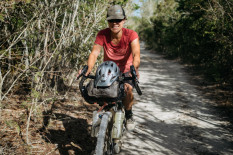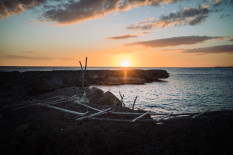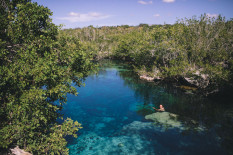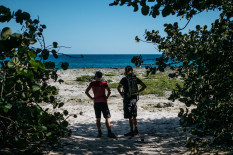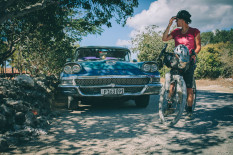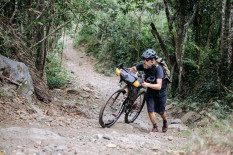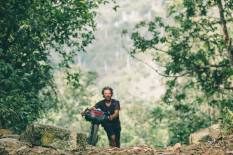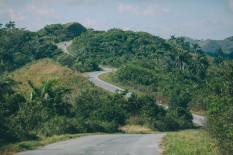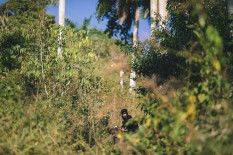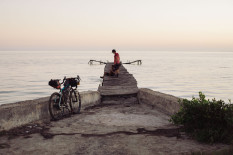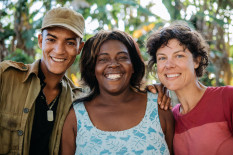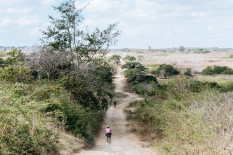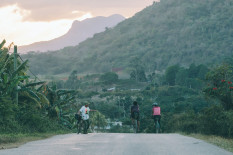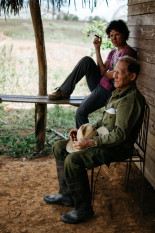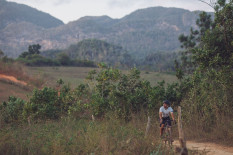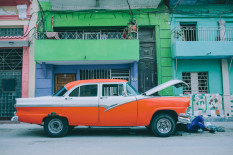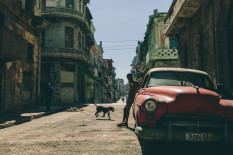Trans-Cuba: La Ruta Mala
Distance
860 Mi.
(1,384 KM)Days
20
% Unpaved
75%
% Singletrack
10%
% Rideable (time)
95%
Total Ascent
32,500'
(9,906 M)High Point
2,633'
(803 M)Difficulty (1-10)
7.5?
- 2Climbing Scale Easy38 FT/MI (7 M/KM)
- -Technical Difficulty
- -Physical Demand
- -Resupply & Logistics
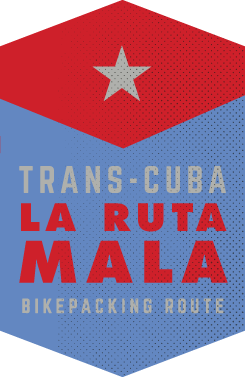
Contributed By

Logan Watts
Pedaling Nowhere
On January 1st, Virginia, Joe and I set out to cycle across Cuba using mainly off-pavement tracks. Our journey began in the eastern coastal city of Santiago de Cuba and carried us over three mountain ranges starting with the Sierra Maestra. Over the course of three weeks we cycled through seemingly infinite farming communities, two more mountain ranges, coastal fishing villages, and into the far west limestone karst menagerie of the Valle de Viñales. Overall we discovered a beautiful time-locked country that’s full of warm people, quirky eccentricities, natural beauty, and history that’s always at the surface.
The name of this route — ‘La Ruta Mala’, or ‘the bad way’ — came pretty easily, but its meaning is also multifaceted. Joe Cruz and I designed it by poring over satellite imagery, a couple of paper maps, and blogs and trip reports by other bike tourists. The majority of the reports floating around made it seem like tarmac roads were going to keep us from our dream of putting together a mostly dirt route across the country. But after starting the route, we quickly realized that was not going to be the case. In fact, many of the tracks we found in our research turned out to be even more rugged and challenging that we expected, and some of the rougher horse tracks likely haven’t even seen bicycles, much less cars. There were many incidents where locals flagged us down shouting that we were going the wrong way, or the bad way, and they insisted on giving us directions to a main road. We smiled and told them that we prefer the bad way.
Cuba is wonderful and complex, a place where one’s own mixed emotions and presuppositions rise to the fore. On the one hand its communist socialist government has resulted in a country with astonishingly little economic inequality, a cohesive society, and an incredible record of environmental sustainability. On the other hand, the long Castro regime has a verifiable record of human rights abuses and has kept Cubans comparatively impoverished. Globally speaking, for some Fidel was a revolutionary hero while for others he was a brutal dictator.
As noted, this route is both mentally and physically challenging. But it also proved to be an incredible means of seeing a side of Cuba that isn’t accessible via the typical tourist agenda. Make sure to read our Feature Story on the trip to get a better taste of the experience. And should you decide to tackle this route or another on the island, check out the Must Know info and Trail Notes below.
Submit Route Alert
As the leading creator and publisher of bikepacking routes, BIKEPACKING.com endeavors to maintain, improve, and advocate for our growing network of bikepacking routes all over the world. As such, our editorial team, route creators, and Route Stewards serve as mediators for route improvements and opportunities for connectivity, conservation, and community growth around these routes. To facilitate these efforts, we rely on our Bikepacking Collective and the greater bikepacking community to call attention to critical issues and opportunities that are discovered while riding these routes. If you have a vital issue or opportunity regarding this route that pertains to one of the subjects below, please let us know:
Highlights
Must Know
Camping
Food/H2O
Trail Notes
- Traveling back in time amongst the ‘50s era cars and horse & buggy driven communities.
- An educational journey through a country that’s full of surprises. For more about that, make sure to read our Feature Story on the trip.
- The Cuban people are incredibly friendly, warm, generous and lively.
- The music, art and festivities that permeate all of Cuba.
- The Sierra Maestra and the jungles and scenery amidst the most dramatic mountain range in Cuba.
- Riding Along the Caribbean and swimming in crystal green water cenotes and natural pools.
- Vibrant cities especially Camagüey and Havana. Sancti Spiritus, Manzanillo and Cienfuegos are also interesting.
- The Valley of Viñales and its limestone karsts.
- US Citizens: Several US cities now offer direct flights. However, it is still impermissible for US citizens to travel to Cuba merely as ‘tourists’. The US State Department requires a signed affidavit on which you have to check one of a dozen reasons for visiting. Among others these include ‘Humanitarian Purposes’, ‘Exportation’, ‘Journalistic Activity’, or the vague ‘Support for The Cuban People’. All of this paperwork is filled out through your airline on-line (JetBlue) or at the airport (American Airlines). There is also a fee for the Visa—arranged at the time of check in—which includes health insurance while you are in the country. Visa prices vary from $50-$100, depending on the third-party service your airline is using.
- There are two types of currency in Cuba. The newer ‘Peso Convertible’ (CUC), which is basically ‘tourist money’, essentially exchanges at a ratio of 1:1 with the USD. This is used in bigger cities and at Casas Particulares. Then there’s the Peso NM (National Money) which exchanges at about 24:1 USD. This is used most everywhere else and is quite amazing. We went to cafeterias where we spent around 60 NM for a meal for three of us! You can find ice cream for 5 NM per scoop in most towns and pizza for 12. The closer you get to Havana the more prevalent the Convertible is. We typically carried both currencies with us. Do not expect Cubans in rural areas to be able to provide change for the Peso Convertibles, unless you’re using the smallest of bills.
- Bring Euros or CAD to exchange. USDs incur about a 30% fee! The best places to exchange currency are at the Cadecas, ask around and you’ll be directed to one. In touristy areas there are often lines, sometimes really long lines. If you arrive at the Cadeca soon after it closes or even sometimes during operating hours, you may find individuals selling currency for market rate. Though of dubious legality, we used this several times without a problem.
- Getting to the start of the ride. This route runs east to west due to prevailing winds. It begins in Santiago de Cuba, so you will have to get there from whatever city you fly into. Holguin is the closest airport serviced by US flights, so in principle one could fly into Holguin and fly out of Havana. Viazul bus (http://www.viazul.com/index.php) is the most common way for tourists to travel long distances within country, and we have heard that there is usually no problem bringing a bicycle in the cargo area. Bus seats sell quickly and are often sold out weeks in advance during high season, so make your arrangements as soon as you know your dates. Three alternatives to Viazul are arranging transport with a private bus tour company through your hotel in Havana, taking a domestic flight, or taking the train (which we were told is very unpleasant and runs very infrequently, but it might add to the adventure http://www.seat61.com/Cuba.htm). Finally, there is always the possibility of hiring private taxi transport for just you and your crew. We did this because we arrived right before New Years, the busiest tourist season and we found no other options. It is not recommended, as it is expensive and the drive from Havana is long and uncomfortable.
- Don’t let the photos fool you, this is not an easy stroll on the beach. There are days of endless jarring dirt and rock roads and countless hike-a-bikes in the mountains. Bring big tires—plus size is not necessary, but we think a drop bar bike with 2.0 is about right. You will absolutely struggle and there will be days that will be no fun at all if you bring a standard cyclocross bike. If you must choose between a traditional cross bike and hardtail 29er, bring the 29er.
- The best time to cycle in Cuba is between December (after Hurricane season) and May. We found Cuba’s January temperatures, even in the mountains, to range from comfortable to downright hot. We rode every day in shorts and short sleeves. There were at most one or two nights when we wore our sweaters.
- Internet is kind of tricky. There is no such thing as a SIM card for data. The best option is to buy ETECSA scratch-off wifi code cards at ETECSA offices. These usually cost $1-2 per hour. Wifi signals can be found in medium to large sized town squares. Look for groups of teens hunkered down around glowing smartphone screens and that’s the wifi hotspot. We recommend buying a lot if you wish to use the internet regularly. Sometimes lines to buy the cards can be long and very time-consuming. Plus, once you buy these cards, you can use them anywhere throughout the country where there’s an ETECSA wifi hotspot.
- ZIKA is present. We didn’t get it but know two others who did in the same span of time. There are a lot of mosquitos and other biting insects in Cuba. We recommend bringing a few ‘Ben’s’ wipes.
- If there is anything you think you might need, bring it. There’s not much in the way of stores in Cuba.
- The northern beaches are better for snorkeling and diving than their southern counterparts, but they are also more touristed.
- If you don’t know Spanish, make sure you bring a translation app or phrasebook.
- Cuba is full of acacia, and many other prickly plants. Without a doubt, go tubeless. Gin and I did, we had zero flats. Joe did not and he had countless flats, to the point where he maxed out his spares and patch kit.
- Casas Particulares and Hotels are the only available tourist lodging. Casas Particulares are tourist designated home stays that are much more pleasant than they sound. Rooms are private and locking with a private bathroom. Meals are typically optional. And, they are a great way of meeting wonderful hosts. That said, we camped more nights than we stayed in Casas. Casas are generally somewhat pricey (for dirtbag budget bikepackers) ranging from $20-50 for the budget/modest variety. Breakfasts are always $5.
- There are no real campgrounds, other than one in El Nicho (on map).
- Camping usually involves that of the ‘stealth’ variety, or camping on folks’ farms. We often were invited to stay in people’s houses, though in those cases we usually elected to sleep in our tents on their land so as not to be too much of a nuisance. Folks usually insisted on feeding us and it made for some of the most wonderful experiences of our trip. There were also occasions when we stopped and asked and were directed to a suitable camp stop like a town gazebo or a baseball field.
- Lodging in Havana can be tight. It’s best to reserve in advance. Try our host, Gladys, who speaks some English. She has several properties in the old town: gladysbf@nauta.cu or her mobile phone +53 53549323
- There are several ways to get food in rural Cuba: 1. Cafeterias. These government run restaurants usually have a menu of two or three items and they are extremely inexpensive; 2. Street vendors. We found several small booths that sold pizza or sandwiches directly from the window; 3. Listen for calls of bicycle vendors selling fruit, pasteles, and other treats; 4. Small markets. In medium size towns there are several chains that are somewhat similar to a convenience store, but the options are very limited. 4. Casas Particulares. Typically Casas offer all meals. Breakfast is always 5 CUC and usually is a nice buffet of fruits, eggs and juices.
- We don’t have much intel on stove fuel. Likely a multi-fuel stove is your best option if you insist on cooking. But, keep in mind there aren’t many options for ‘groceries’, Cafeterias are your best bet for affordable food. However, you will get what they have… Egg sandwiches are common, as are ‘salchichas’ (hot dogs).
- Outside of major cities, we mostly filtered our water with either a steripen or pump filter out of an abundance of caution. Still, when we were served water in homes or in cafeterias we would occasionally just risk drinking it. Other times we used the steripen on the pitcher or glasses and apologized for our delicate stomachs. The SteriPen definitely proved to be invaluable on this trip.
- For picky eaters, or folks with diet restrictions, Cuba will be tough. We recommend bringing a load of Lara bars or whatever your preference.
- A few recommended delicacies: Roasted pork (Cuba’s specialty); Guanábana (in English, soursop) the most amazing fruit on the planet… think coconut mixed with pineapple and pear; Fried green bananas; Cuban coffee… strong, sweet, delicious; Mojitos, even if you don’t care for a mojito, they are pretty good here.
In Viñales, it may seem ambiguous as to whether you can ride bikes on the red dirt single track that make up the “park.” You can—some tourists rent bikes just for this purpose—and no one will hassle you.
For those interested in a shorter version, we might recommend the section between Sancti Spiritus and Viñales. Also, if you are into the remotest of places, you might consider a loop around the far east portion of the island.
As with many of the routes on BIKEPACKING.com, we’d like to leave this one open-ended and open source. Should you choose to ride this route and find potentially better or additional options, please let us know. For example, while the beginning and end are logistically ideal for transportation, this route could technically be extended from the tip to tip of the island. Also, there are a couple sections that may have better options.
Terms of Use: As with each bikepacking route guide published on BIKEPACKING.com, should you choose to cycle this route, do so at your own risk. Prior to setting out check current local weather, conditions, and land/road closures. While riding, obey all public and private land use restrictions and rules, carry proper safety and navigational equipment, and of course, follow the #leavenotrace guidelines. The information found herein is simply a planning resource to be used as a point of inspiration in conjunction with your own due-diligence. In spite of the fact that this route, associated GPS track (GPX and maps), and all route guidelines were prepared under diligent research by the specified contributor and/or contributors, the accuracy of such and judgement of the author is not guaranteed. BIKEPACKING.com LLC, its partners, associates, and contributors are in no way liable for personal injury, damage to personal property, or any other such situation that might happen to individual riders cycling or following this route.
FILED IN (CATEGORIES & TAGS)
Latin America
Please keep the conversation civil, constructive, and inclusive, or your comment will be removed.






